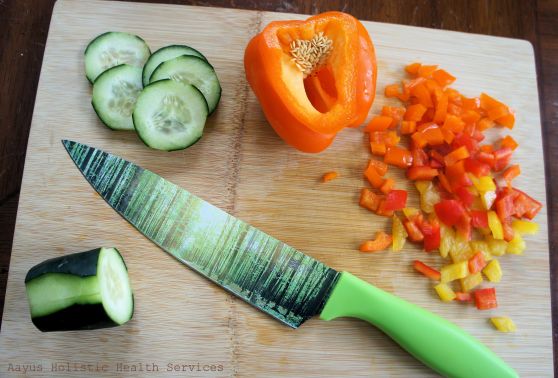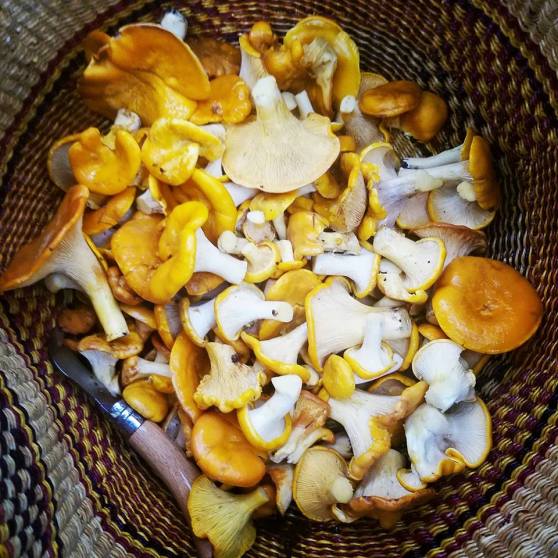Sugar: the death of many a health goal. Whether you’re trying to lose weight, improve digestion, keep your immune system strong, lower cholesterol, manage IBS, lower pain and inflammation, eliminate migraines, improve depression and anxiety, and so on… sugar makes it all so, so much harder. Studies have shown that white refined sugar is even more addictive than cocaine and heroin, so no wonder it’s so difficult to quit! Excessive sugar intake is now considered to be a public health crisis, for many reasons.
digestion, keep your immune system strong, lower cholesterol, manage IBS, lower pain and inflammation, eliminate migraines, improve depression and anxiety, and so on… sugar makes it all so, so much harder. Studies have shown that white refined sugar is even more addictive than cocaine and heroin, so no wonder it’s so difficult to quit! Excessive sugar intake is now considered to be a public health crisis, for many reasons.
And “detox”… a word that some will scoff at. What do I mean when I say you can “detox” from sugar? Detoxification is defined as the process of removing toxic substances or qualities. Yes, white refined sugar is toxic, and yes we’re removing it. Yes, sugar addiction and cravings are toxic to your health, and yes we’re removing them. No, it won’t hurt, you won’t suffer, and you won’t hate me.
20 Reasons Why Sugar Ruins Your Health
- Sugar can suppress the immune system.
- Sugar interferes with absorption of calcium and magnesium.
- Sugar can weaken eyesight.
- Sugar can cause hypoglycemia.
- Sugar can cause a rapid rise of adrenaline levels in children.
- Sugar contributes to obesity.
- Sugar can cause arthritis.
- Sugar can cause heart disease and emphysema.
- Sugar can contribute to osteoporosis.
- Sugar can increase cholesterol.
- Sugar can significantly increase risk of cancer.
- Sugar can contribute to diabetes.
- Sugar can cause cardiovascular disease.
- Sugar can make our skin age by changing the structure of collagen.
- Sugar can produce a significant rise in triglycerides.
- Sugar can increase the body’s fluid retention.
- Sugar can cause headaches, including migraines.
- Sugar can cause depression.
- Sugar can contribute to Alzheimer’s disease.
- In intensive care units, limiting sugar saves lives.
(Adapted from 146 Reasons Why Sugar Is Ruining Your Health by Nancy Appleton, Ph.D.)
LETS BEGIN YOUR DETOX!
We will first want to identify all sources of white refined sugar in your diet. Read the ingredient listing on your labels. You’ll find sugar is lurking in everything from ketchup to yogurt, and there are countless trick names for white sugar. (evaporated cane juice or cane juice extract anyone?) Luckily there are many healthier alternatives. Is there sugar in your ketchup? Try buying an unsweetened version or crushing/pureeing fresh tomatoes instead. Sugar in your yogurt or almond milk? Buy an unsweetened version instead and sweeten with berries and/or a touch of honey.
You’ll find that choosing whole foods over processed foods (eg. oatmeal instead of boxed cereals) will make it much easier to avoid added sugar. Many of the “low calorie,” “low sugar,” or “sugar free” diet and snack foods on the market are chock full of junk that will not support your health or your goal of eliminating sugar. We also want to avoid chemical sweeteners as much as possible (such as aspartame & sucralose/Splenda), which may seem tempting when you are trying to avoid sugar. Not only are they all toxic to some degree, they will likely leave you craving more sugar later and this detox will be more difficult to accomplish. Studies have found that people who consume artificial sweeteners and “diet” foods tend to weigh more. And did you know that about 10% of people actually still get blood sugar fluctuations from synthetic sweeteners?
“Naturally-derived artificial sweeteners,” as I call them, are a no-go too. A sweet yet calorie and sugar free sweetener- sound too good to be true? Well, yes. There will always be a trade off. Highly processed “natural” sweeteners that have been made with chemical solvents, bleaching agents, etc are no longer natural. Stevia for example is wonderful, in its whole food form. The white, crystalline powder we commonly see today in stores is a very far cry from that wholesome green leaf it started as. Ask yourself- could you make this in your yard or kitchen? If the answer is no, question how far removed your stevia, xylitol, etc is from a real, whole food.
Now that you’ve identified the sugars, we need to identify the WHY. Why are you jonesing for it?
- White refined sugar is highly addictive. As you replace it with the gentle, whole food sweeteners we’re about to discuss, you’ll begin to escape its grip. When you consume sugar, do you tend to crave it again later in the day? Many do, and that’s the cycle we need to break. Once you’ve eliminated it entirely you can enjoy healthier versions of your favorite sweets, with complete control over your sugar intake, vs the sugar controlling you.
- Dehydration = Cravings. Sometimes sweet cravings are a sign of dehydration. Before you go for the sugar, have a glass of water and then wait a few minutes to see what happens.
- Eat sweet vegetables and fruit. They are sweet, healthy and delicious. Some examples of sweet vegetables include onions, sweet potatoes, rutabagas, parsnips, taro root, celeriac, yucca root, blue heirloom potatoes, and beets. The more you eat, the less you’ll crave sugar. These foods will give you a subtle sweetness, but are significantly lower in sugar. Your body says- hey, I got the right carbs & sugars I need… I guess I don’t want the unhealthy carbs & sugars as much! And because they are vegetables, they are incredibly nutrient-dense and have a healing effect on your body.
 Explore sweet spices & herbs. Fennel seed, star anise, allspice, coriander, cinnamon, nutmeg, anise hyssop, sweet cicely, cloves and cardamom will naturally sweeten your foods without the sugars. (and they all have great health benefits, some even used as medicines!)
Explore sweet spices & herbs. Fennel seed, star anise, allspice, coriander, cinnamon, nutmeg, anise hyssop, sweet cicely, cloves and cardamom will naturally sweeten your foods without the sugars. (and they all have great health benefits, some even used as medicines!)- Use whole food sweeteners. Make the switch to the sweets that nourish you. Gentle sweeteners like maple syrup, brown rice syrup, raw honey, or maple sugar give you the flavors you need, but also supply essential nutrients. Honey for example has potent antimicrobial benefits and can be used for treating allergies, and maple syrup is a good source of b vitamins, manganese, and zinc. With this depth of flavor and nutrition you’ll find you need less of them to attain the same level of sweetness white sugar gave you in recipes. There are lots of really nice gentle sweeteners, I just like to look at where it comes from. If it takes lots of processing, solvents, bleaching, and the use of other chemicals to make it, then that’s a telltale sign that it’s not good for you. If it’s something you could easily make in your kitchen (we make maple syrup from the trees in our yard every year, for example), go ahead and eat it. When your favorite recipe calls for 1 cup of white sugar, use ½ to ¾ cup of maple syrup or honey instead. This allows you to enjoy small portions in moderation, without finding yourself desperately digging around for more sugar a few hours later.
- Get moving. Regular exercise will help boost mood, increase energy, balance your blood sugar levels, and alleviate stress and tension without medicating yourself with sugar.
- Add non-food sweetness to your life. Cravings for sweets aren’t always about food. When you are tired or stressed, your body will crave energy and comfort… and sugar is the quickest, easiest instant gratification that many of us find. Sometimes we are simply craving sweetness from other areas of our lives like relationships or hobbies, or we crave foods out of boredom or stress.
- Old habits die hard. Is there a food you just grab without thinking, or that is a part of your daily routine? Maybe a not-so-healthy favorite childhood dessert? Identify, address, and get guidance and support in changing that bad habit to a good one.
- Protein intake. Too little or too much protein (yes, as with any other nutrient you can overdo it and it’s more common than you think!) can result in cravings for sweets. This is a problem I help a lot of clients sort out. Some people do great with animal proteins, some need vegan or vegetarian proteins. Too many animal proteins like meat or dairy can mean less fiber in your diet, so portions, balance, and moderation is important for omnivores. Respect your body’s individuality and experiment.
For your first 3 days, indulge in all of the aforementioned foods as much as you need, but zero white refined sugar. Unbearable sugar craving? Eat a spoonful of honey. Or 8. Whatever you need to get through it. (YUM!)
Once you’ve accomplished all of this, your next step is to pare down your total sugar intake. Watch your portions. Even healthy sweets contain sugars that easily add up, so your next goal will be to get your total intake down to 40 grams per day. For a couple days, track your total grams. I recommend the myfitnesspal app, or use this website: http://nutritiondata.self.com/ to get nutritional information. To navigate the website, you will search for your food (or ingredients used to make your food) in the top search bar, locate your specific food, then record the total grams of sugar for your serving.
Some examples of sugar content:
1 tbsp raw honey: about 16 grams
1 tbsp maple syrup: about 12 grams
1 medium apple: about 14 grams
1 medium carrot: about 3 grams
1 medium sweet potato: about 6 grams
Where are you finding the majority of your sugar intake is coming from? How can you replace or reduce that particular food?
Ideally, you should be getting a total of at least 7 servings of fruits and vegetables daily. By aiming for 4-5 servings of vegetables, that will help to crowd any excess fruits you are getting. Did you know that each daily portion of vegetables reduces your overall risk of premature death by 16%, but each serving of fruit reduces your overall risk of premature death by only 4%?
You now have some great tools for beating that nasty little sugar bug! Remember- focus on adding in and creating abundance & variety, rather than focusing on restriction & denial. Vibrant health is a journey, not a destination- celebrate each day that you continue to make progress!

If you feel you need more personalized and in depth guidance, this is what I help people with every day! Sugar intake is only one facet of health; in my one-on-one personalized holistic health programs, we visit every area of your life and health in depth, to ensure you accomplish all of your health goals permanently. Bad habits can be hard to overcome for good- but our comprehensive programs give you the personal guidance, support, recipes, accountability, and tools you need to make these and other positive changes last a lifetime.
Contact me at 920-327-2221 or megan@aayushealth.com for your free consultation!
Warmly,
Megan Normansell (Kerkhoff), CHC, AADP, CFH
Certified Holistic Practitioner/Holistic Nutrition/Herbalist/Wild Edibles Guide
Follow me on Facebook and Instagram
for more recipes and healthy living ideas!
http://www.aayushealth.com – megan@aayushealth.com – 920-327-2221
Copyright Megan Normansell 2018 All rights reserved.







 A fairly uncommon but interesting Pheasant Back mushroom (cerioporus squamosus) look-alike, Neolentinus lepidius, is commonly known as the Train Wrecker. From afar, the earth-toned feathered patterning on the cap may have you convinced you’ve spotted a Pheasant Back. It’s had me momentarily confused! Once you get closer you’ll notice the distinct differences, beginning with the observation that this mushroom has gills, where a pheasant back has pores. Where pheasant backs have a distinctive cucumber/watermelon scent, the train wrecker has a very pleasant, fresh anise aroma to it. Neolentinus lepidius also has a tough, ringed stem with scales that match that of the cap.
A fairly uncommon but interesting Pheasant Back mushroom (cerioporus squamosus) look-alike, Neolentinus lepidius, is commonly known as the Train Wrecker. From afar, the earth-toned feathered patterning on the cap may have you convinced you’ve spotted a Pheasant Back. It’s had me momentarily confused! Once you get closer you’ll notice the distinct differences, beginning with the observation that this mushroom has gills, where a pheasant back has pores. Where pheasant backs have a distinctive cucumber/watermelon scent, the train wrecker has a very pleasant, fresh anise aroma to it. Neolentinus lepidius also has a tough, ringed stem with scales that match that of the cap.





















 digestion, keep your immune system strong, lower cholesterol, manage IBS, lower pain and inflammation, eliminate migraines, improve depression and anxiety, and so on… sugar makes it all so, so much harder. Studies have shown that white refined sugar is even more addictive than cocaine and heroin, so no wonder it’s so difficult to quit! Excessive sugar intake is now considered to be a public health crisis, for many reasons.
digestion, keep your immune system strong, lower cholesterol, manage IBS, lower pain and inflammation, eliminate migraines, improve depression and anxiety, and so on… sugar makes it all so, so much harder. Studies have shown that white refined sugar is even more addictive than cocaine and heroin, so no wonder it’s so difficult to quit! Excessive sugar intake is now considered to be a public health crisis, for many reasons. Explore sweet spices & herbs. Fennel seed, star anise, allspice, coriander, cinnamon, nutmeg, anise hyssop, sweet cicely, cloves and cardamom will naturally sweeten your foods without the sugars. (and they all have great health benefits, some even used as medicines!)
Explore sweet spices & herbs. Fennel seed, star anise, allspice, coriander, cinnamon, nutmeg, anise hyssop, sweet cicely, cloves and cardamom will naturally sweeten your foods without the sugars. (and they all have great health benefits, some even used as medicines!)